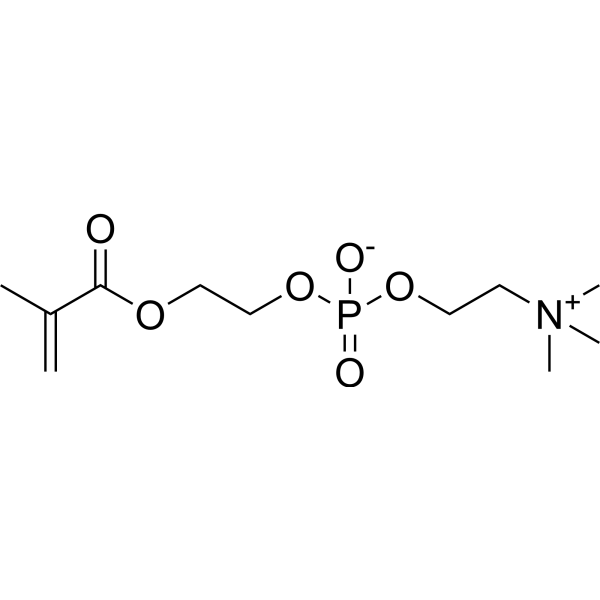Copolymers of 2-methacryloyloxyethyl phosphorylcholine (MPC) as biomaterials.
N Nakabayashi, Y Iwasaki
文献索引:Biomed Mater Eng 14(4) , 345-54, (2004)
全文:HTML全文
摘要
Copolymers of 2-methacryloyloxyethyl phosphorylcholine (MPC) showed good hemocompatibility as hypothesized. The hypothesis was surfaces having phosphorylcholine groups by polymerization of MPC could accumulate phospholipids from blood stream and show good blood compatibility. We designed and prepared a methacylate having a phosphorylcholine group. While it was possible to introduce them by polymer reactions, polymer reaction is not always good method to prepare the desired pure surface. This must be very important point to consider biomaterials, as we have to apply them in our body without any adverse effects. The hypothesis was confirmed by changing copolymer composition. The adsorption amount of phospholipids on the surfaces increased with increasing the MPC units in the copolymers. On the other hand, increasing MPC units in MPC copolymers decreased adsorption amount of peptides. There is limitation in blood compatibility tests in vitro due to unstable characteristics of blood itself. We evaluated them with series of blood compatibility tests, in vitro, ex vivo and in vivo, on coated PMMA beads, modified hollow fibers for hemodialysis and 2 mm small diameter blood vessels, respectively. These data suggested MPC is a promising methacrylate to develop good blood contacting devises, which may not require systemic anticoagulation. Conventional blood compatible biomaterials were not suitable to make permeable membranes. But MPC is soluble in water and we could prepare permeable membranes to various solutes by the copolymerization. Introduction of MPC copolymers on cellulose and polysulfone hollow fiber membranes gave them nonthrombogenicity but it did not give adverse effect on their permeability. These data suggested that it is possible to apply them to hemodialyzers, oxygenators and percutaneous glucose sensors to keep diabetic patients easier. MPC surfaces are good hydrogel to minimize damage on tissues by lubricating between organs and the coated devices. They do not induce denaturation of peptides, which is beneficial to keep activities of enzymes longer. And poly-MPC dissolved is applicable to stabilize several bioactive peptides in aqueous phase. So MPC polymers are useful to minimize fouling by inhibiting the adsorption of bioactive proteins. MPC has high potential to develop many varieties of new biomaterials useful in so-called biotechnology. MPC and their copolymers are commercially available from NOF (Tokyo, Japan) and Biocompatibles (UK, as PC technology).
相关化合物
| 结构式 | 名称/CAS号 | 分子式 | 全部文献 |
|---|---|---|---|
 |
2-甲基丙烯酰氧乙基磷酸胆碱
CAS:67881-98-5 |
C11H22NO6P |
|
Zwitterionic red fluorescent polymeric nanoparticles for cel...
2014-10-01 [Macromol. Biosci. 14(10) , 1361-7, (2014)] |
|
Sorafenib resistance and JNK signaling in carcinoma during e...
2014-05-01 [Biomaterials 35(22) , 5749-59, (2014)] |
|
Oncogenic Ras/ERK signaling activates CDCP1 to promote tumor...
2014-10-01 [Mol. Cancer Res. 12(10) , 1449-59, (2014)] |
|
Real time visualization and characterization of platelet dep...
2015-04-01 [J. Biomed. Mater. Res. A 103(4) , 1303-11, (2015)] |
|
Long-term hip simulator testing of the artificial hip joint ...
2014-03-01 [J. Orthop. Res. 32(3) , 369-76, (2014)] |